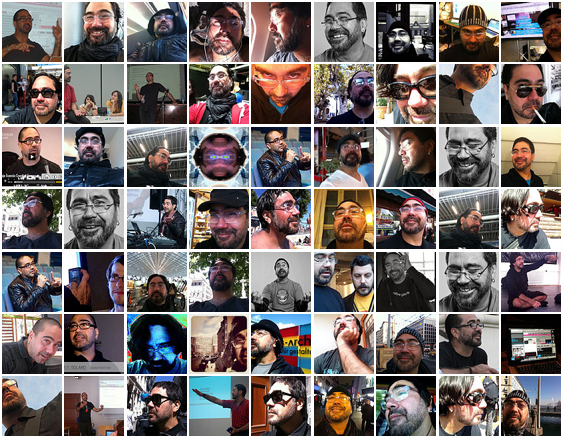Graduada en la Facultad de Bellas Artes, Universidad Nacional de La Plata, Profesora en Artes Plásticas orientación Pintura y Cerámica; Licenciada con orientación Pintura y Cerámica; y Magíster en Estética y Teoría de las Artes.
Jefa de Trabajos Prácticos cátedra de Didáctica y Práctica de la Enseñanza, y en Dibujo I y II, FBA, UNLP. Coordinadora de Educación Artística, Dirección de Gestión Curricular y Formación Docente de la Nación.
Instigadora categorizada III y becada por la UNLP, para el estudio de las interrelaciones entre las disciplinas del cuerpo y el espacio escénico.
Especialista en performance interactivas en tiempo real. Trabaja en instalaciones interactivas con captura óptica de movimiento, en dos obras:
Proyecto Hoseo de su autoria: Invitada a Cuerpo Digital, Festival Internacional de Videodanza, Cuerpo y Nuevas Tecnologías, Cochabamba, BOLIVIA, Octubre 2010. FIVU 09, Uruguay, Centro Cultural España en Montevideo, http://www.cce.org.uy. Fase 1 Expo-Trastiendas mayo 2009, Curadora: Graciela Taquini. Proyecto en representación de la FBA, UNLP. http://www.fase1encuentro.blogspot.com; Museo de Arte Contemporáneo 2009(Salta): Diálogos Montevideo 2008 /; Interfase, Cuerpo Y Nuevas Tecnologías, Santiago, Chile, octubre 2007; Festival de Arte Contemporáneo AONI, Viedma, Río Negro, Argentina, Diciembre 2010; Seminario POETICAS TECNOLÓGICAS MAPAD2, Directora Ivanni Santana, Salvador de Bahía, Brasil. Noviembre del 2010 y 2011.
Proyecto Speak junto al artista sonoro y músico programador Fabian Kesler <www.fabiankesler.com.ar> y el creador del software MOLDEO <www.moldeo.org> programador de video e imagen Fabricio Costa. Invitados la Intervención “El insomnio de los monumentos”, instalación de Norberto Laino, Hall Central Carlos Morel del Teatro San Martín; al Festival Internacional de Videodanza del Uruguay FIVU, Octubre 2011, Montevideo Uruguay, http://www.fivu.org/; NHT. Septiembre 2011, C C. Recoleta, http://www.iuna.edu.ar/wordpress-2/?cat=10; VIII Festival de Nuevas Tendencias LA MENAGE, Teatro Real, Agosto 2011, Córdoba http://lamenagefestival.blogspot.com/p/programacion-2011.html; Ciclo La Plata Arde, plataforma para artistas locales, Teatro Argentino de La Plata, Sala TACEC, julio 2011, La Plata, http://www.teatroargentino.gba.gov.ar/2011/tacec2011/la_plata_arde.html.
Trabajos de Video Danza con el Proyecto Webcamdanza: exploración desde las posibilidades técnico-expresivas con la cámara Web, en donde indaga sobre esta relación entre cuerpo y dispositivo a través de la creación de “piezas audiovisuales”. Participa de ponencias y publicaciones en diversos medios en Internet y en papel:http://territorioteatral.org.ar/html.2/dossier/pdf/n5_02.pdf ; “Terpsícore en ceros y unos. Ensayos de Videodanza”; editorial Guadalquivir Festival Internacional VideoDanzaBA; Compilación: Silvina Szperling; ISBN: 9789872213879 “Estudios sobre Danza en la Universidad”, Universidad de la República de Uruguay. Compilación: Lic. Diego Carrera. 2009. ISBN 978-9974-0-6-0605-8, http://cuerpoytecnologia.files.wordpress.com/2010/02/estudios-sobre-danza-en-la-universidad.pdf.
“Pensar La Videodanza”, I Simposio Internacional de Videodanza “Espacio del cuerpo y de la imagen en la video danza” PG: 76 a 93; http://www.videodanzaba.com.ar. Danzanet Argentina es la revista de Danza Contemporánea. Red Escena Virtual. http://www.danzanet.com.ar/
Dicto talleres: Taller de Vídeo Danza dentro del marco del FIVU09 http://www.cce.org.uy ; “Taller / Producción / Video Danza A Partir De Tecnología Low-Tech” Biblioteca Nacional, Sala Cortazar. http://www.VideoDanzaBA.com.ar ; “Realización de una pieza de videodanza-Proyecto WEBCAMDANZA” en Cuerpo Digital, Festival Internacional de Videodanza, Cuerpo y Nuevas Tecnologías, Escuela de cine La Fabrica, Cochabamba, Bolivia, Octubre 2010.
Convocada por los directores Marcelo Delgado y Emilio García Wehbi para “El Matadero. Un Comentario”. Obra dramático-musical. CCR. Rojas, 2009; Ver publicación Libros del Rojas, UBA, ISBN 978-987-1075-90-4. Convocada por los directores de El Periférico de Objetos, D. Veronese y E.G. Wehbi, para la realización de la obra “El Suicidio Apócrifo I”, 2002-2004.
Invitada a trabajar bajo la dirección de Emilio García Whebi en un evento performático “El Matadero, Slaughter House” 2005/08. En línea, 2005/06/07/o8. Ciudad Konex, jueves 7 de febrero.
Ver material en línea:
http://www.alejandraceriani.com.ar
https://www.youtube.com/user/Danzainteractiva
https://www.youtube.com/user/WEBCAMDANZA




